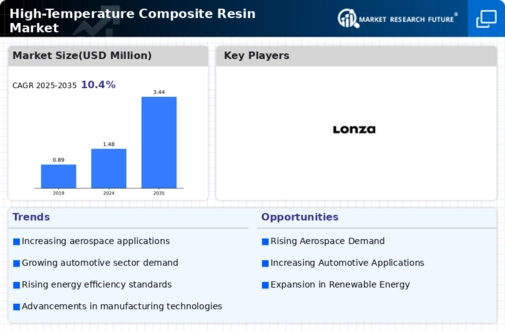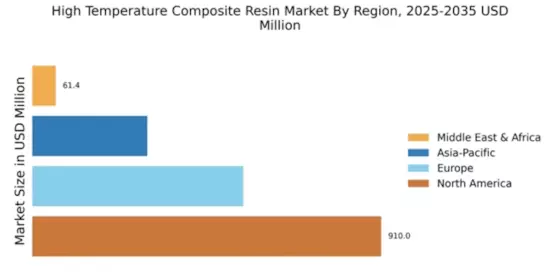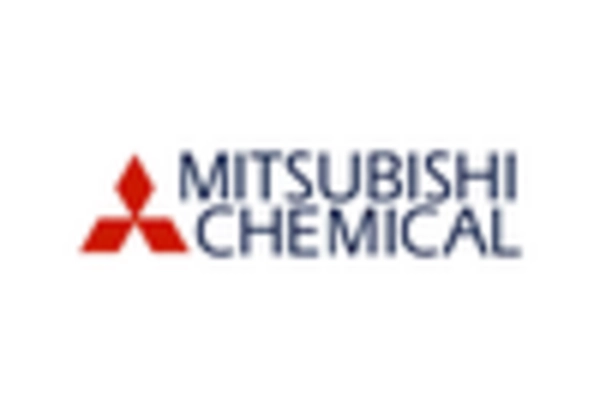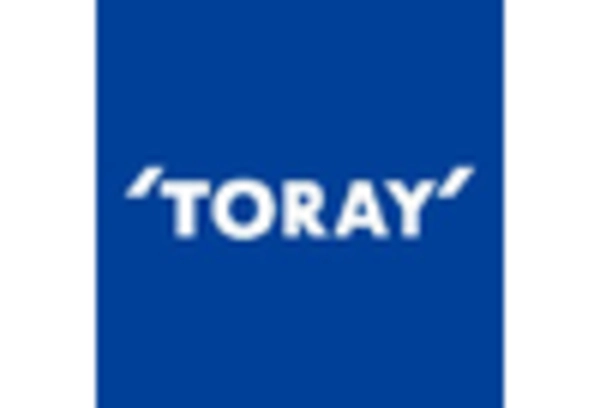North America : Market Leader in Innovation
North America is poised to maintain its leadership in the High Temperature Composite Resin Market, holding a significant market share of $910.0M in 2024. The region's growth is driven by increasing demand from aerospace and automotive sectors, alongside stringent regulations promoting lightweight materials. The push for sustainability and energy efficiency further catalyzes market expansion, with innovations in resin formulations enhancing performance and durability.
The United States stands as the primary contributor, hosting key players like Hexcel Corporation and Hexion Inc. The competitive landscape is characterized by ongoing R&D investments and strategic partnerships among leading firms. This dynamic environment fosters advancements in composite technologies, ensuring North America's continued dominance in high-performance applications.
Europe : Emerging Market with Growth Potential
Europe's High Temperature Composite Resin Market is projected to grow significantly, with a market size of $550.0M in 2024. The region benefits from robust automotive and aerospace industries, which are increasingly adopting advanced composite materials for their lightweight and high-performance characteristics. Regulatory frameworks aimed at reducing carbon emissions are also driving demand for innovative materials that enhance fuel efficiency and sustainability.
Leading countries such as Germany, France, and the UK are at the forefront of this market, supported by major players like Solvay S.A. and BASF SE. The competitive landscape is marked by a focus on technological advancements and collaborations among manufacturers to meet evolving industry standards. As the market matures, Europe is expected to play a crucial role in shaping the future of high-temperature composites.
Asia-Pacific : Rapidly Growing Market Segment
The Asia-Pacific region is witnessing rapid growth in the High Temperature Composite Resin Market, with a market size of $300.0M in 2024. This growth is fueled by increasing industrialization and the rising demand for lightweight materials in sectors such as automotive, aerospace, and electronics. Government initiatives aimed at boosting manufacturing capabilities and technological advancements are also contributing to market expansion, making the region a focal point for investment.
Countries like Japan and China are leading the charge, with key players such as Toray Industries Inc. and Mitsubishi Chemical Corporation driving innovation. The competitive landscape is characterized by a mix of established companies and emerging players, all vying for market share. As the region continues to develop, the demand for high-performance composite materials is expected to surge, further solidifying its position in the global market.
Middle East and Africa : Emerging Market with Untapped Potential
The Middle East and Africa (MEA) region is gradually emerging in the High Temperature Composite Resin Market, with a market size of $61.37M in 2024. The growth is primarily driven by increasing investments in infrastructure and aerospace sectors, alongside a growing awareness of the benefits of composite materials. Regulatory support for advanced manufacturing processes is also fostering a conducive environment for market expansion, as industries seek to enhance performance and reduce weight in applications.
Countries like the UAE and South Africa are leading the way, with a focus on developing local manufacturing capabilities. The competitive landscape is still evolving, with opportunities for both local and international players to establish a foothold. As the region continues to develop its industrial base, the demand for high-temperature composites is expected to rise, presenting significant growth opportunities.

















